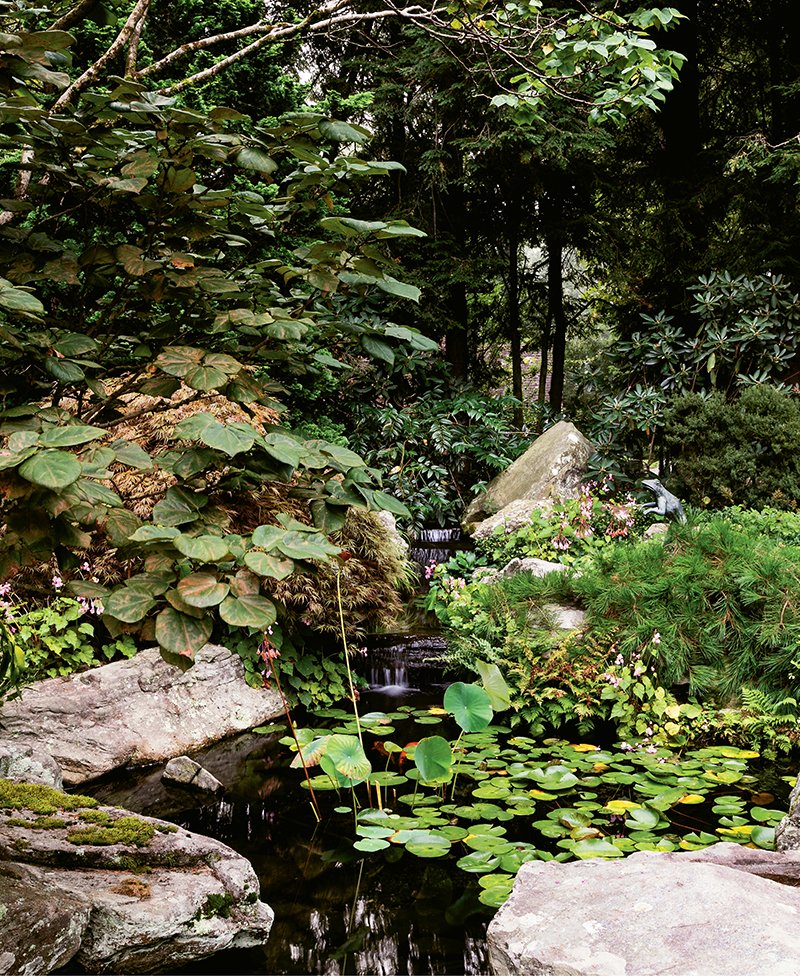How Does Your Garden Grow?
How Does Your Garden Grow?: Long-time green thumb, author, and WNC resident Nan K. Chase offers a guide to gardening in the mountains
With four seasons of loveliness every year, Western North Carolina offers a world of opportunities for gardening. But for newcomers to the area—or green thumbs in training—taming the landscape may mean learning fresh approaches to planting. After all, WNC is situated in one of the most botanically diverse parts of the world. Between the many seasonal wildflowers and a vast selection of long-lasting ornamentals, it’s no wonder why some gardeners feel overwhelmed by the sharp learning curve.
Several factors set WNC apart from other garden environments.
For one, the climate allows for a year-round progression of blooms from native species, and these can serve as the basis for overall planning. Here, we have delicate wildflowers that blanket the forest floor in spring, rhododendrons and wild azaleas dotting the uplands in summer, towering meadow plants and brilliant leaves in fall, and the rarest blossoming stars of winter.
WNC also abounds with water. It’s everywhere: rain and fog, snow and ice, all flowing downhill along creeks, rivers, and waterfalls. All this moisture results in diversity in plant selection, so WNC green thumbs aren’t shy about using hardy ferns, mosses, carnivorous plants, and big water-loving summer wildflowers.
Vegetable lovers take heart: WNC gardeners often coax year-round production by choosing cool-weather varieties in addition to summer favorites. Herbs love it here, too—with enough drainage.
The region also holds remarkable soil diversity, which means that what works in the front yard may not work in the back. Have patience though; it can take a few seasons to get it right. In fact, WNC garden professionals often recommend living in a new spot for an entire year before making any plant choices. Wildlife feeding patterns may dictate what survives, and hidden perennials may suddenly appear.
Ready to dig deeper? Turn the pages for the dirt on local dirt, climate, and hazards, gardening chores and pointers for each season, natives for your yard, and more helpful tips for the WNC garden.
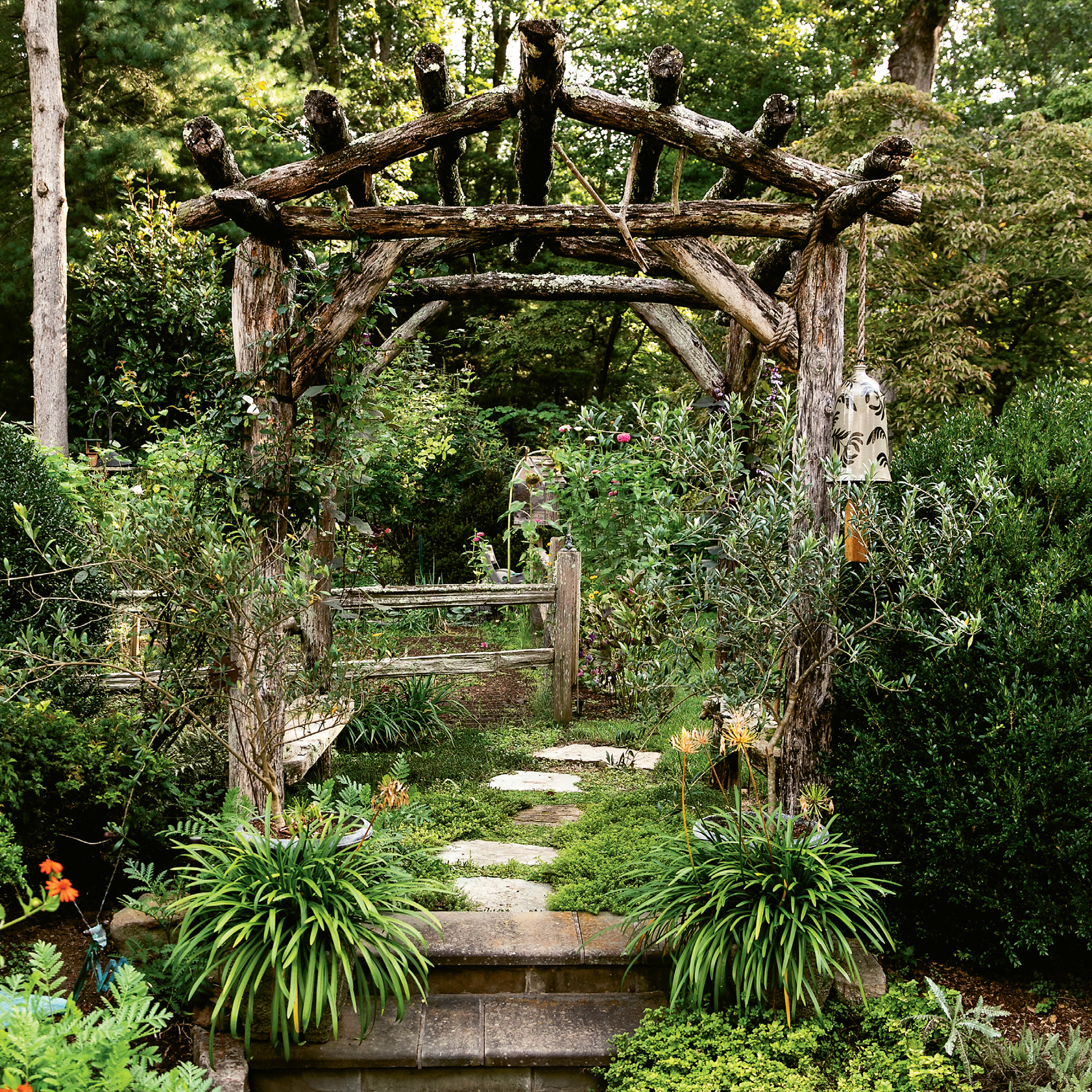
The WNC Garden
Can there be another region of the country where the terrain varies so much in a square mile? From steep slopes and shady hollows to rocky balds and open meadows, every variation can nurture a distinct backdrop for creating a garden. So be sure to let the eye wander from near to far as you learn.
Soil: The Dirt on Dirt
The most distinctive feature of WNC gardening is the variety of soil types, influenced by topography, geology, elevation, climate, vegetation, and time. No one gardening rule applies to the entire region, and even experienced gardeners use trial and error. If a plant fails to thrive, just move it.
The Blue Ridge Mountains are old, and the underlying rocks throughout the region include granite, gneiss, sandstone, and limestone. Their natural weathering is just one factor in today’s soil composition; the ground has also been subject to logging, mining, and grading, all with subsequent loss of rich topsoil. Additionally, homesites throughout WNC may have been built on masonry rubble from earlier projects, or near coal ash contamination, resulting in chemical imbalances that can affect how plants grow.
So, approach gardening in WNC as a mash-up of microclimates. Many successful WNC gardeners ignore soil testing. They rely on plants that do well naturally in the soils close by, rather than choosing old favorites that may never do well here. If you do want to test your soil and learn from the results, it’s free, April to November, through the N.C. Department of Agriculture; there’s a $4 fee otherwise. Visit ncagr.gov/agronomi/forms.htm and download the Lawn and Garden Sample form.
Did you know? Healthy soil contains minerals, organic matter, porous space for air and water, and microorganisms.
Safety First
There’s a right way and a wrong way to dress for gardening. The wrong way (shorts and flip-flops) is more comfortable, but the safe way will save many painful hours. This simple dress code, adhered to by many professional gardeners, can prevent instances of puncture wounds and scrapes, insect stings, and poison ivy.
Dress Code
• Long pants, long-sleeve shirt, and sturdy closed-toe shoes with socks
• Wide-brim hat and garden gloves
• Eye protection for digging or cutting chores, ear protection with power tools
• Optional: sunscreen and mosquito repellent
Climate: How Cold Can You Go?
When it comes to understanding climate, you’ll want to consider the U.S. Department of Agriculture’s Hardiness Zones, which are most useful when evaluating which plants can survive the winter here. The zones run from 1 to 13, with gradations within each. Essentially, the higher the number, the warmer the zone. Much of WNC is in the 6a range, meaning plants that can withstand temperatures as low as -10°F can survive here.
Beware: more important than the zone is the microclimate where you want to put each plant—shady or sunny, dry or wet, sheltered or windblown, mountaintop or valley. Those considerations often trump temperature. A rhododendron planted next to a sun-blasted, south-facing brick wall may die, but planted on a wooded north slope, it may flourish. Use hardiness zones mostly to judge low temperature tolerance.
Count on unseasonable weather any time of year. Depending on the elevation, there can be snow in late summer or a balmy 70-degree day at Christmas. Relax; it’s a natural part of the WNC climate.
Find your zone - Visit planthardiness.ars.usda.gov for an interactive map, searchable by zip code.
Foolproof Perennials
Garden like a pro with these nearly indestructible plants
{Irises} Bearded irises, which come in a rainbow of colors, love a hot, dry environment with thin soil. Plant them very shallow and watch them spread. Siberian irises are especially cold-hardy, and there are Japanese irises that grow in wet ground, plus tiny crested irises for the forest floor.
{Daylilies} They can grow anywhere! Sun or half-shade, wet or dry conditions, daylilies love it all. The common wild variety is a mellow orange, but there are thousands of fancy cultivars of varying sizes and hues.
{Hostas} Here’s a shade-loving plant that comes in various sizes, leaf textures, and colors. It looks nice in large groupings and is easy to divide once established. Caution: deer love to eat hostas, so don’t invest in expensive specimens if you live in deer-prone areas.
Hazards – Pests Beware
Pests aren’t limited to insects. In WNC they include raccoons, squirrels, bears, groundhogs, and more—anything that invades your garden uninvited. To minimize intrusions, try these strategies:
- Lose the bird feeder and replace it with a birdbath, which you’ll want to refresh daily. Birds need the water and they will do a lot of insect control on their own.
- Secure trash with bear and raccoon-proof closures. Do not keep sweets in the car, and keep car doors locked.
- Choose plants with minimal appeal to animals and birds. Try the onion family, aromatic herbs, evergreens with pointy leaves or foliage, and plants with fuzzy branches or thorns.
- Eliminate sources of standing water, which allow mosquitoes to breed during warm weather. Check drainage pipes and the shallow dishes holding potted plants.
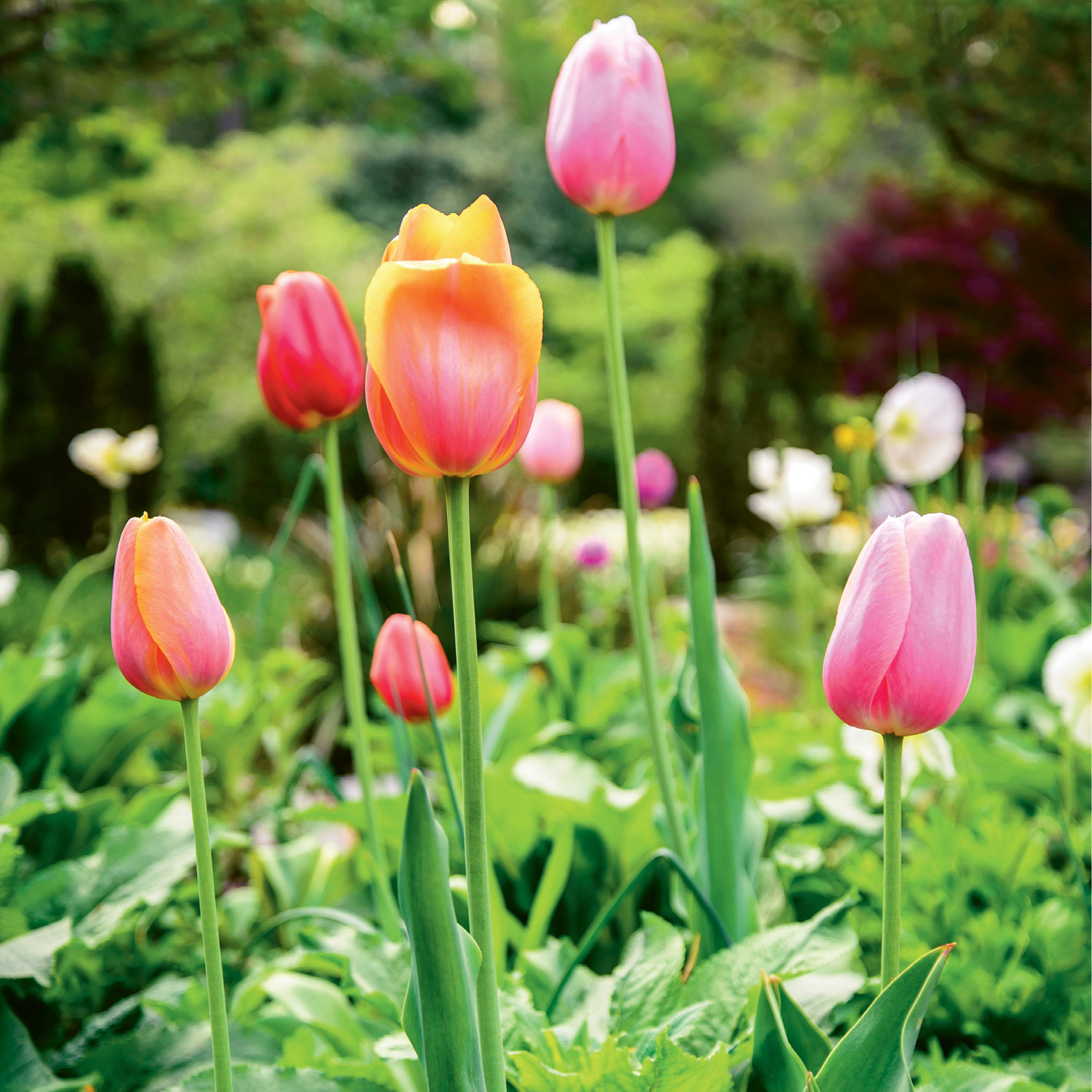
́Tis the Season
Tips, chores, and practical advice for year-round gardening in the mountains
SPRING
It’s spring! There’s so much to do, and the garden centers are busy.
Springtime naturally lends itself to cleanup. By raking away last year’s mulch you can expose the soil to the beneficial effects of sunlight and give birds a chance to break up and aerate the dirt as they hunt for food.
Many plants that thrive in WNC summers need a slow start in spring, with protection under a row cloth cover or a rigid canopy on cold nights. And vegetable seeds are often cold-sensitive, needing soil to reach a certain temperature before germinating. So pay attention to information on seed packets and be patient.
Pruning with a Pro
Horticulturalist and Garden Coach for B.B. Barns Garden Center, Cinthia Milner offers a step-by-step on pruning to help your trees and shrubs thrive.
 |
1. Remove all diseased, damaged, and dead wood, which often looks brown, dry, and twiggy. This is done throughout the year. Never leave damaged wood on a plant. It is a habitat for diseases and pests. Remove it at the nodes (where a branch splits) or nearest the leader (the vertical stem at the top of the trunk). You want to make sure it’s completely removed. |
 |
2. Remove watersprouts. Watersprouts impede sunlight, air, and circulation, making things cluttered. This leads to stem breakage and poor air/sunlight penetration. Remove it as close to the branch as possible without splitting the bark. |
 |
3. Remove crossing and rubbing branches. Crossing and rubbing branches create wounds on the tree/shrub that becomes a habitat for disease and pests. Remove only the bottom branch that is crossing or rubbing the branches; this way, the top branch can thrive. |
| 4. Remove weak wood and pencil-thin growth. These compete for nutrients and sunlight. | |
 |
5. Thin out interior branching by selectively removing weak branches from the base, or crown, of the shrub. This allows for better sunlight and air circulation inside the plant, and is particularly important for fruiting trees, bushes, and brambles. |
 |
6. Remove suckers. Most trees create these, which tend to come out at the bottom. They are messy, unattractive, and compete with the plant for available nutrients. Remove suckers at the very bottom of the plant. |
It’s important to note: you can’t kill a plant by pruning it, but you can get rid of prospective blooms. Spring blooming plants like azaleas, for example, bloom on old wood, so if you prune that in February, you’re getting rid of the blooms to come that spring. It’s important to know your plant and make sure you’re pruning the plant in the appropriate season.
Seasonal Shopping List
• Stock up on mulch, fertilizers, and mineral additives for soil.
• Purchase bedding plants and vegetable seeds and starts.
• Order flower bulbs like gladiolus, dahlias, and lilies to plant for summer color.
• Treat yourself to a new pair of gardening gloves and a watering can.
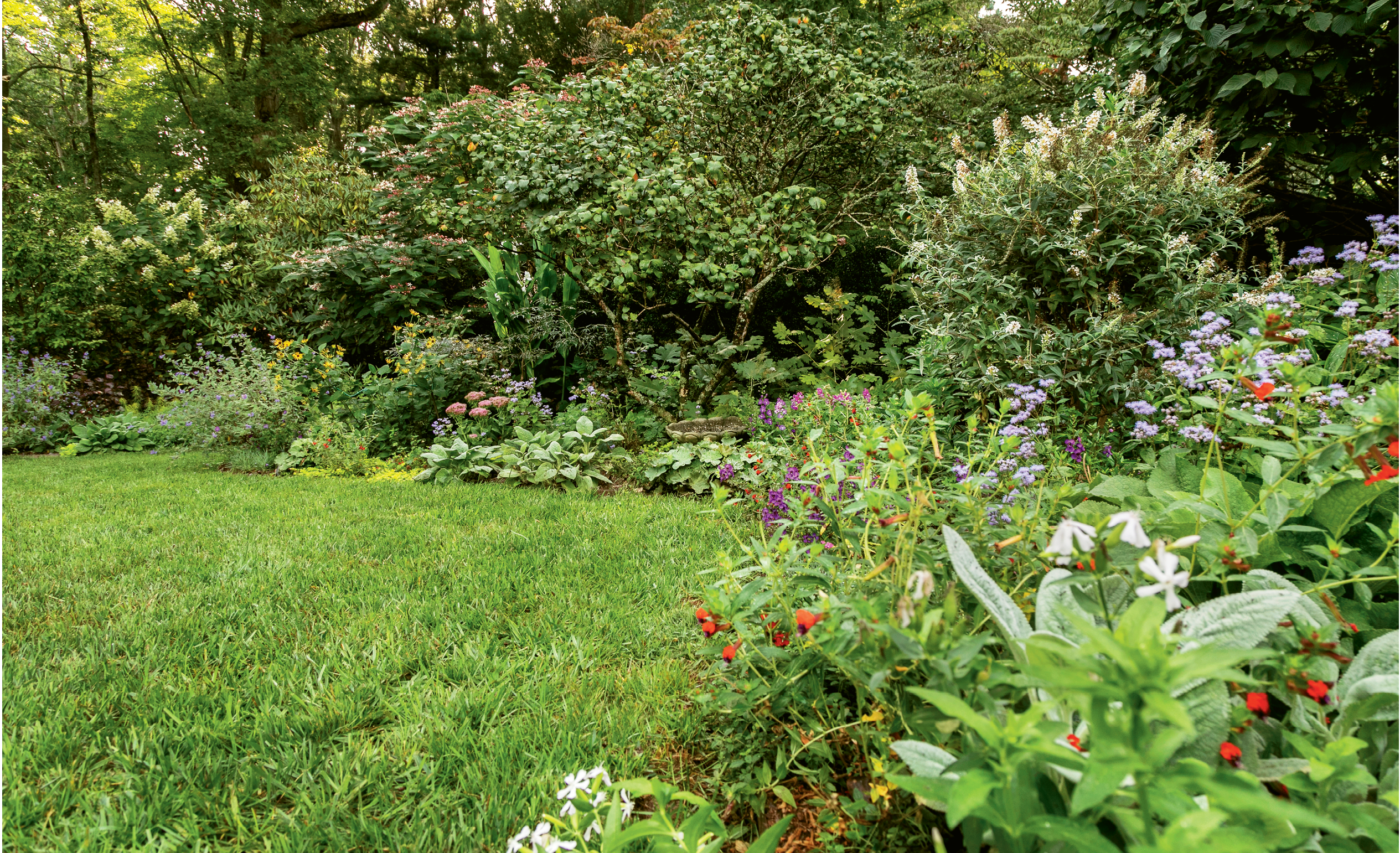
SUMMER
Summer lasts wonderfully long in WNC, stretching out for nearly half the year in some areas. The seemingly endless day-to-day progression of blooms, greenery, and vegetables are what new gardeners in the region say delights them the most. The summer garden may start out looking light and lacy and end up in beguiling shades of dark green and with six-foot-tall flower spikes everywhere.
Give yourself permission to add new plants and to divide successful plants mid season to move into new areas. The summer garden is forgiving; with a big drink of water and enough sunlight, new transplants can take hold easily and make the garden look extra lush with very little effort.
And it’s perfectly all right to do a bit of light summer pruning to increase airflow through shrubbery and smaller trees.
Seasonal Workout
• Do 10 or 15 minutes a day of light weeding in the cooler hours of morning and evening.
• Deadhead spent blossoms to encourage new buds and keep plants attractive.
• Water containers and new garden beds frequently to keep them moist but not soaking.
• Sweep walkways and sidewalks to show off the garden.
• Remove vegetable plants once they have stopped producing and compost them.
Mulch: Early summer is a good time to apply mulch, which serves as ground protection that keeps plants cool, moist, and weed-free. Here’s a quick guide to the many types of mulch:
- For vegetable beds, use lightweight and open mulch like straw or grass clippings. Once seedlings are above ground you can mulch to a depth of six inches or more.
- Under conifers and other evergreens, a mulch of pine needles is attractive and discourages pesky undergrowth.
- For high traffic areas consider decorative and tough gravel mulch.
- In ornamental beds wood mulch such as cedar, cypress, pine bark, or hardwood sets off the greenery and blooms.
Tip: While longer-lasting cedar mulch resists decay, avoid using it or other lightweight mulches on steep slopes, as they may wash off in heavy rain.
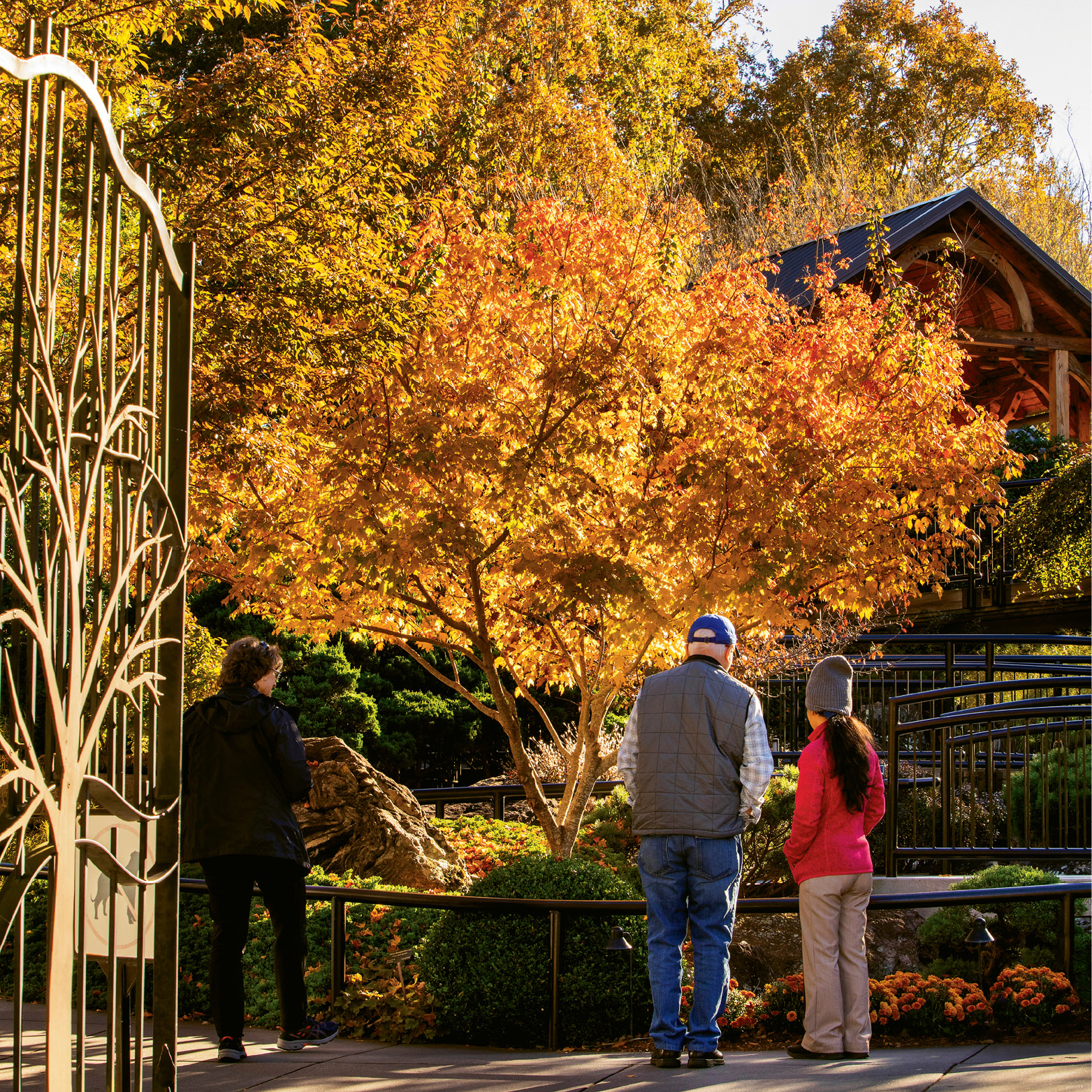
FALL
Autumn is one of the busiest times of the year, not only to clean up around plants from the summer’s growth, but also to think ahead for your winter and springtime gardens too.
Do you grow roses? With extra care, many different rose varieties will survive WNC’s low winter temperatures. In fall, once the blooms are through, clear out dead limbs from the roses, leaving only healthy canes. (Hybrid tea roses may need a close cropping, but others merely need light shaping.) Then bank plenty of soil up around the main trunk to insulate the plants from drying winter winds.
Some landscape experts say that fall is a good season for lawn repair. Lime, fertilize, over-seed bare spots, and then make sure the lawn gets plenty of water until hard freeze.
Seasonal Checklist
• Plant bulbs for spring-blooming flowers like tulips, daffodils, narcissus, and grape hyacinth.
• Plant allium bulbs like garlic and shallots, and the onion bulblets called “sets,” which will produce scallions until the ground freezes.
• Plant seeds for leeks and cool-season greens like arugula, mizuna, collards, spinach, and kale.
Garden Tool Maintenance
Start next gardening season off right by doing proper garden tool maintenance in the fall. Once your garden chores are over, sanitize hand tools such as clippers, trowels, claws, and the like. Damaging pathogens can survive to ravage your plants next year; use rubbing alcohol to wipe down all metal surfaces. Sharpen blades as needed. Some people clean shovel and hoe blades with oiled sand. And make sure to rinse off mud from handles, then store large tools upright and under a roof. Keeping tools dry will prolong their life.
Make Oiled Sand
Fill a five-gallon bucket with sand and add ¾ quart of motor or mineral oil. The sand should be damp but not moist. Push garden tool blades into the sand to clean and condition the metal.
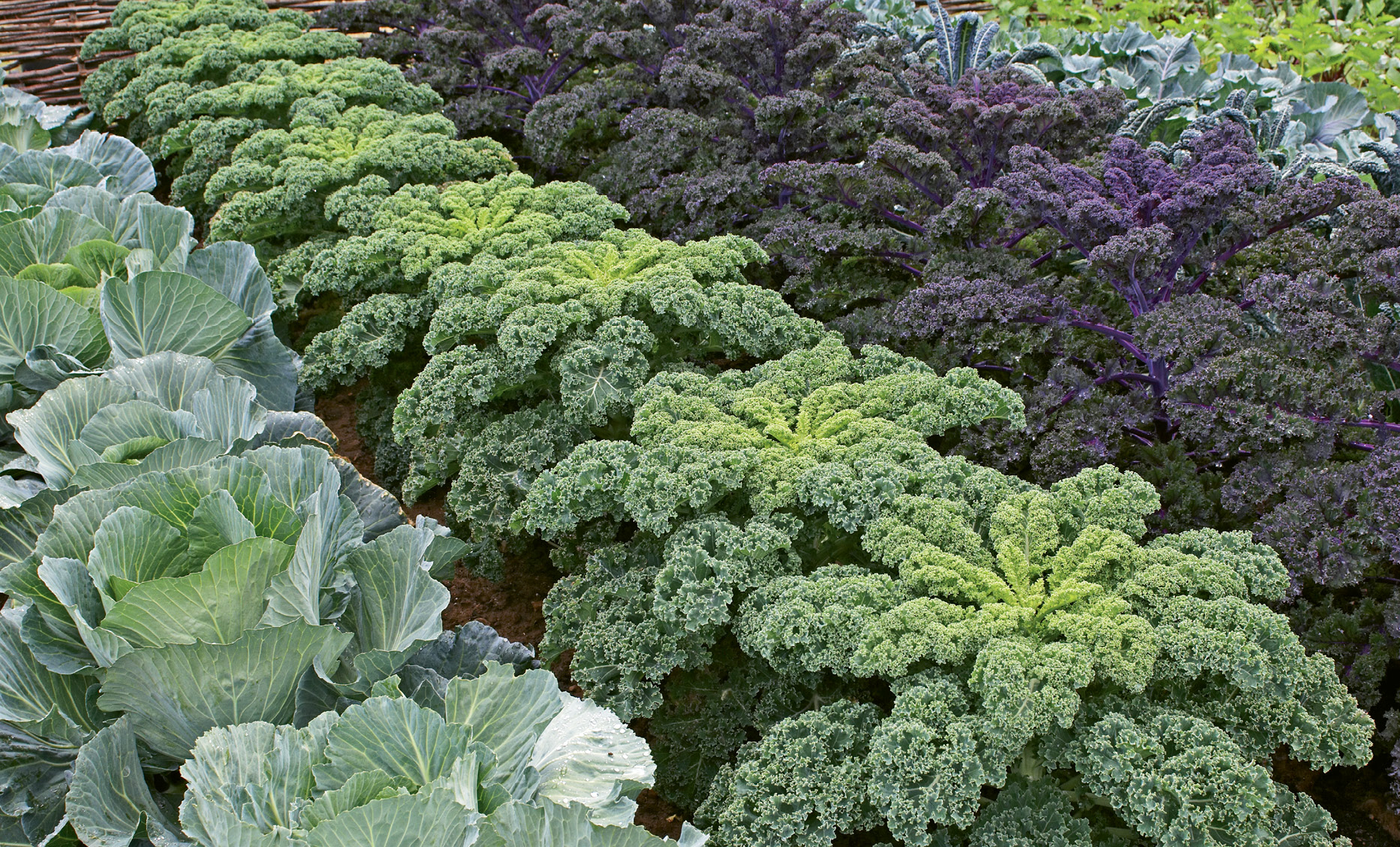
WINTER
The WNC winter garden can be lush with beauty and, yes, color. Many native species, such as rhododendron, trillium, and ferns, can withstand sub-zero temperatures. As an extreme example: the weather station atop Grandfather Mountain in Linville, with an elevation of 5,945 feet, has recorded a low of -32°F and winds up to 120 miles per hour. Yet a midwinter hike reveals all sorts of greenery in sheltered niches. Alternatively, in the relatively mild conditions in places like Wilkesboro or Lenoir, a more colorful range of ornamental plants may grow all winter long.
Although the coldest winter weather doesn’t last so terribly long in WNC compared to northern parts of the country, there can be extended periods of rough weather, including blizzards and high sustained winds that dry out the evergreens. But even ice and snow can add a dimension of beauty that’s breathtaking, like diamonds hanging on every branch.
Cover Them Up!
Protect your plants from frost and freeze
In WNC, warming temps in late winter can cause plants to bud, putting them in danger when an overnight freeze sets in. To protect fruiting trees, shrubs, or hardy perennials, cover the plant completely with a cloth. Let it drape to the ground rather than tie it up, so that heat radiating from the soil can warm the plant. Remove in the morning.
Protect Your Fruit Trees
Most fruit trees have thin barks that are susceptible to splitting when temperatures fluctuate. To protect them, insulate the trees by tying multiple layers of loose cloth that stretch from the lowest limb to the ground. This wrapping can be left on for most of the winter.
Seasonal Workout
• In late fall, rake up debris that’s collected around the trunks of shrubs and small trees, and then cover the bare earth with a light layer of fresh mulch.
• Give boxwoods and hollies a good soak before the ground freezes, and ask a garden professional about sprays to coat the leaves (or wind might rob moisture they need).
• Shape fruit trees and vines by pruning crossed branches and excess growth.
• Help the birds by providing a heated birdbath.
• See where there are gaps in the landscape and order new plants for spring delivery.
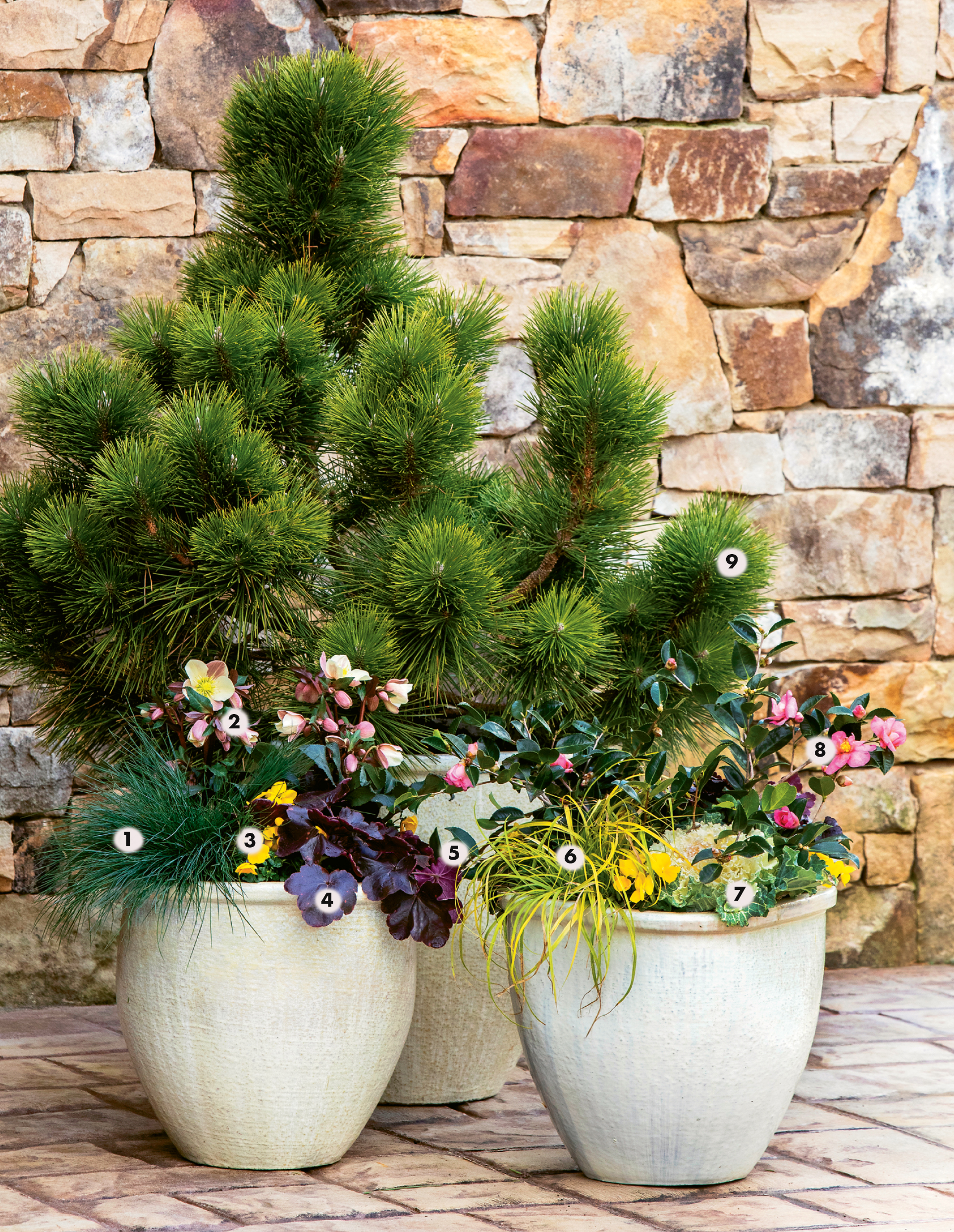
1.“Beyond Blue” Festuca grass. 2. Helleborus x ballardiae “Camelot” Lenten rose. 3. Majestic Giants II “Clear Yellow” pansy. 4. Heuchera x “Obsidian” coral bells. 5. Heuchera x “Amethyst Mist” coral bells. 6. “Everillo” Carex sedge grass. 7. “Osaka White” winter cabbage. 8. “Winter’s Fancy” camellia. 9. Pinus thunbergii “Thunderhead” Japanese black pine
CONTAINER GARDENING
Not everyone wants a big garden, so if you prefer petite—or live in a condo or apartment—try container gardening
The trained staff at any WNC garden center can help you get started with the right containers, soil mixes, fertilizers, and watering systems. Just remember: success with containers depends on water, water, water, plus adequate water-soluble fertilizer and enough sun to sustain growth. When choosing plants, colorful annuals work well, of course, but try these other options to create a mix-and-match look:
• Herbs
• Ferns and trailing plants
• Miniature roses
• Spring bulbs
• Salad greens (arugula, mizuna)
• Climbing vines on a small trellis
When choosing a container, anything can work, from an old teapot or washbasin to a sleek and elegant large planter. Drainage is the key; always look for containers with one or more holes in the bottom. Planting and care may vary depending on whether a container is glazed or unglazed, terra-cotta or plastic composite.
Tip: Salad greens can produce for months of enjoyment if they are sown in a wide, shallow container.
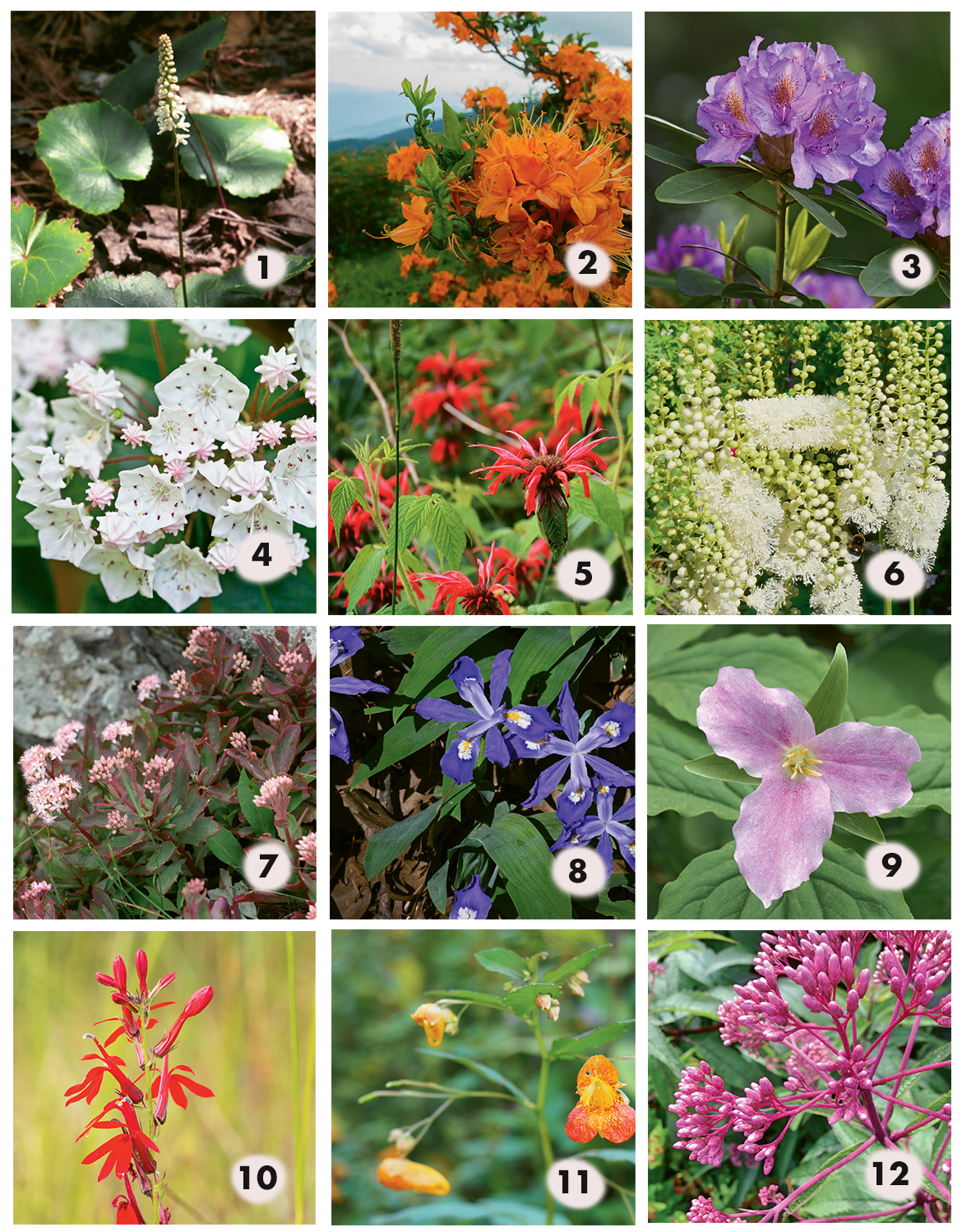
GO WILD
A sampler of perennial native wildflowers that can translate well into home garden settings
1. Galax, Galax urceolata. Pronounced “GAY-lax,” this plant has round, glossy leaves growing close to the ground. Visible all year on the forest floor, it has wands of delicate white flowers.
2. Flame azalea, Rhododendron calendulaceum. A big wow in wooded settings, the flame azalea explodes with springtime blossoms ranging from pale pink-yellow to dark orange.
3. Catawba rhododendron, Rhododendron catawbiense. Known by a number of different names, the purple rhododendron is a vigorous evergreen that loves shade and rewards proper placement with bold blossoms in early summer.
4. Mountain laurel, Kalmia latifolia. Blooming around June, the beloved kalmia has complex blossoms. It’s best planted in a forest understory.
5. Scarlet bee balm, Monarda didyma. Found naturally along creeks and able to tolerate extremely wet conditions, the richly colored blooms and strong minty aroma make this a garden gem.
6. Black cohosh, Actaea racemosa. Like fairy wands, the six-foot-tall flower spikes of black cohosh are unmistakable in forest settings or in sunny spots with sufficient moisture.
7. Allegheny stonecrop, Hylotelephium telephioides. A tough native sedum, also called “live-forever,” its fleshy leaves support dusty pink flower heads in late summer.
8. Dwarf crested iris, Iris cristata. A jewel of the forest, this early-blooming iris is tiny, yet can spread into mats of pale purple flowers and light green leaves as it matures.
9. Trillium, Trillium various species. Harbingers of springtime, the many different trilliums—all with three petals apiece—bloom early and then fade back into the ground until the next year.
10. Cardinal flower, Lobelia cardinalis. Spreading in meadows and along creeks, the cardinal flower bears spikes of deep red blossoms. It’s an accent piece among greenery.
11. Jewelweed, Impatiens capensis. This delicate-looking forest plant spreads fast in shady spots by releasing its seeds when touched. The sap acts as a natural antidote to poison ivy, which often grows nearby.
12. Sweet Joe Pye Weed, Eutrochium purpureum. This giant wildflower blooms on stalks up to 14 feet tall in late summer, attracting butterflies and other pollinators. It likes a moist, sunny, open location.
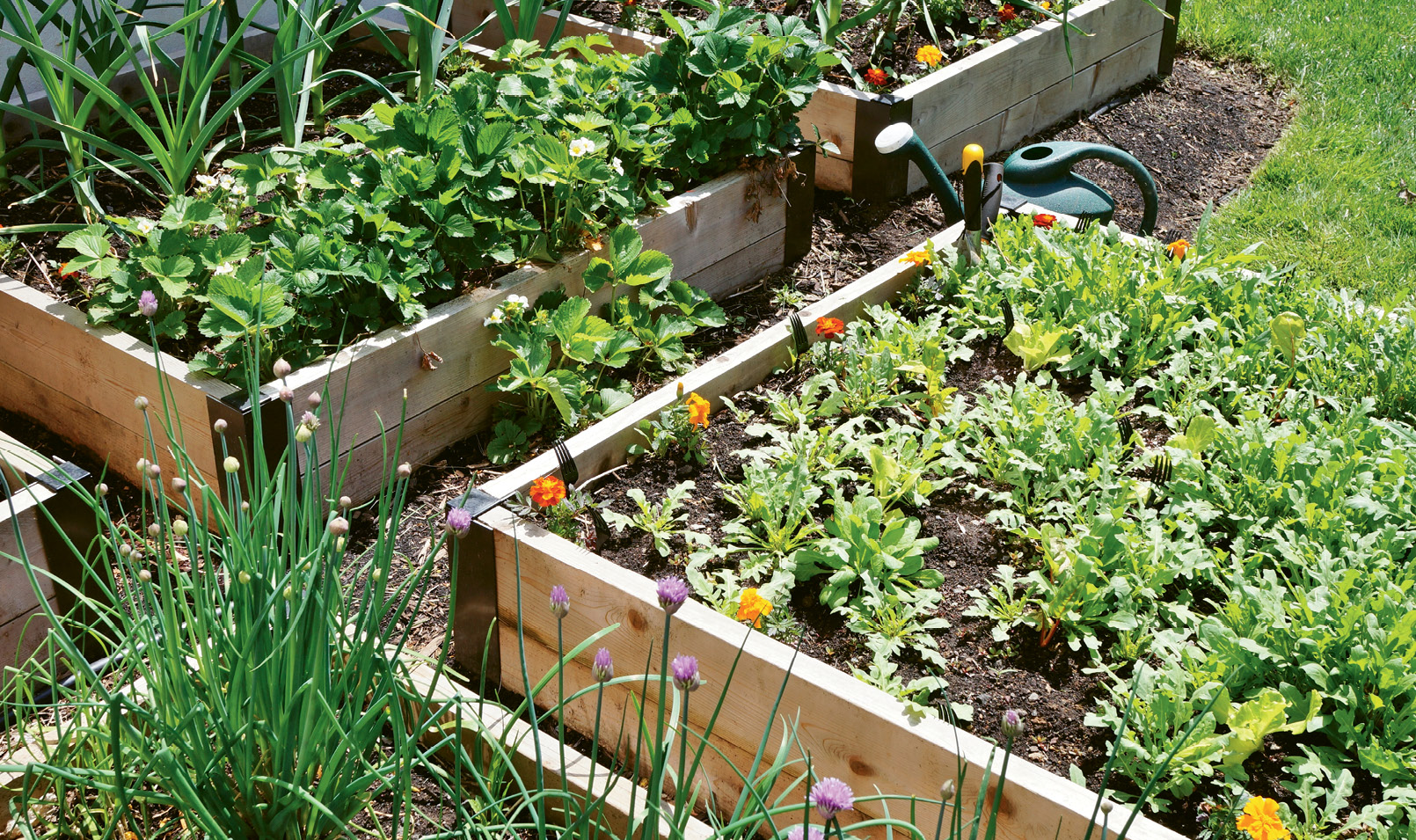
VEGETABLE BOUNTY
WNC farmers rock! Just visit any tailgate market to see the abundance. Consider this: let the experts tend the corn, beans, squash, cucumbers, and other midsummer veggies that animals love to devour. Instead, look toward perennial herbs, root vegetables, and members of the allium family that can all hide in plain sight. Alliums include onions, garlic, leeks, shallots, chives, and native ramps. They do well in the cool mountain climate, and are healthful and delicious.
Many experienced mountain gardeners know that spring and fall are the perfect times to plant cool-weather crops like lettuce, spinach, collards, and mustard greens. And with enough mulch or other protection, it’s sometimes possible to grow and harvest crops right through the winter.
Soil Tips:
• Dig in shredded leaves, aged manure, composted brush, and mineral supplements to build strong soil.
• Turn the soil deeply to break up clay and facilitate root growth.
• Keep beds well-drained to prevent soil diseases.
HONE YOUR GREEN THUMB
Garden clubs, some of them generations old, exist throughout WNC and expose members to local plants, design, and gardening techniques. The Garden Club of North Carolina has 265 clubs in 140 towns statewide. Visit gardenclubofnc.org to find one near you. Many newer garden clubs that aren’t affiliated with the state organization exist as well. Garden centers can also recommend groups looking for new members. Or, volunteer at any public garden in WNC for hands-on learning.
For the more serious gardener, The North Carolina Cooperative Extension Master Gardener program has offerings in most WNC counties. It’s a rigorous course of study that combines 40 hours of classroom instruction (and an exam), plus a 40-hour internship. The big payoff is learning local gardening skills and then helping others. To remain active in the program, participants are required to log at least 20 hours of volunteer time and at least 12 hours of continuing education annually. To locate your local extension office, visit ncstategardening.org.
Improve your Soil Naturally - Enhance your compost and your soil with these extra additives
- Banana Peels add potassium
- Chicken Feathers add nitrogen
- Coffee Grounds add nitrogen
- Eggshells add calcium
- Epsom Salts add magnesium
- Lobster Shells add phosphorus
- Wood Ash neutralizes soil
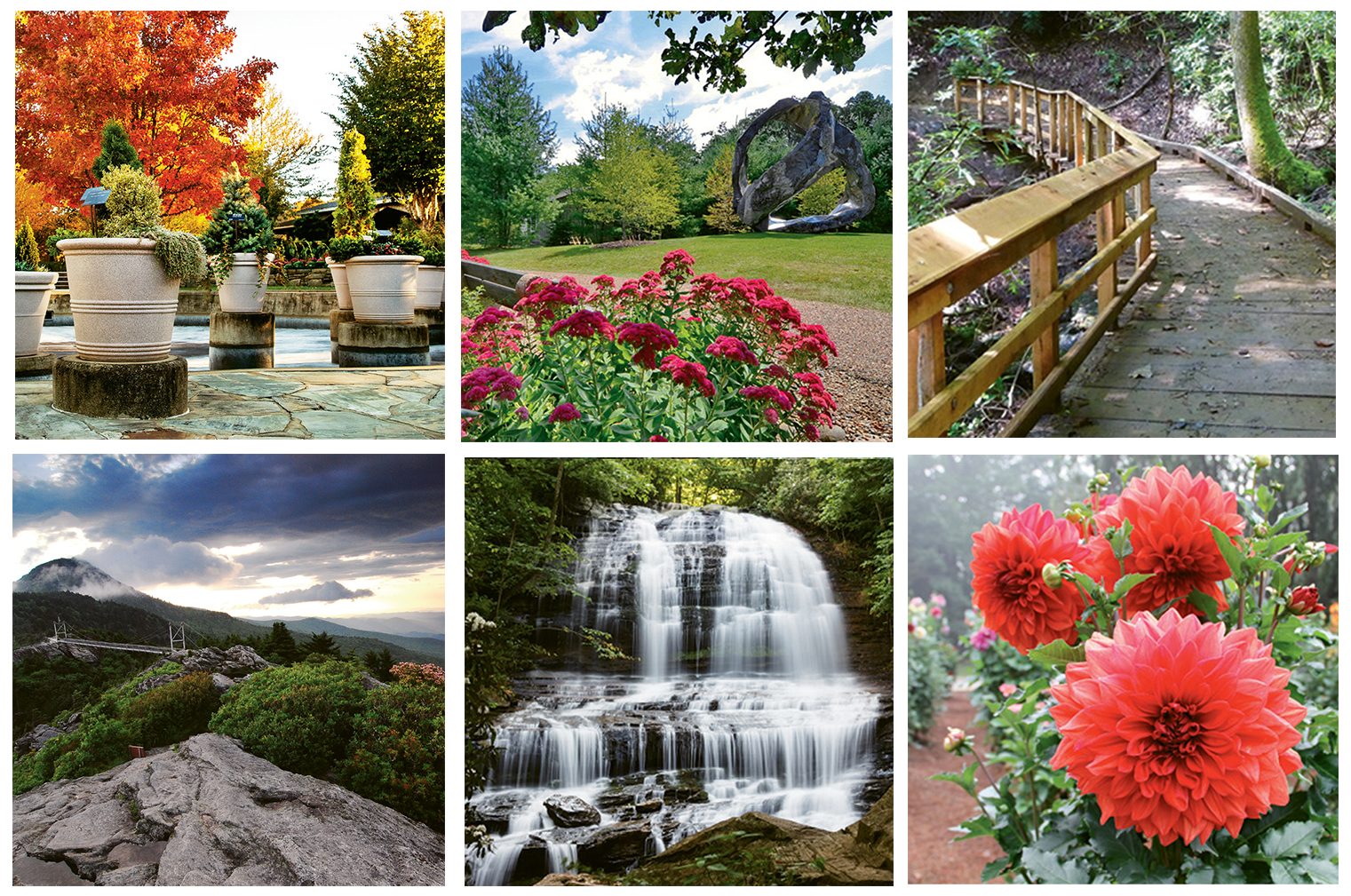
PUBLIC GARDENS
Lace up your walking shoes and visit some of the region’s most beautiful displays of native plants at 10 public gardens in WNC
1. The North Carolina Arboretum {Asheville} This 434-acre campus has it all: manicured pathways, forest trails, display gardens, classrooms, and special exhibits. ncarboretum.org
2. The Village Green {Cashiers} Located in the heart of town, the green features a wetland boardwalk, an azalea garden, and much more. villagegreencashiersnc.com
3. Cherokee Botanical Garden and Nature Trail {Oconaluftee Indian Village, Cherokee} See a traditional herb garden in the midst of the Cherokee visitor experience. visitcherokeenc.com
4. Grandfather Mountain {Linville} The craggy peaks shelter WNC’s hardiest native plants. Try a naturalist-led walk in winter, or enjoy a wildflower hike anytime. grandfather.com
5. Botanical Gardens at Asheville {Asheville}Walking or biking distance from downtown, these woodland gardens host plant sales and classes. ashevillebotanicalgardens.org
6. Pearson’s Falls & Glen {Saluda} A wildflower wonderland, especially in March and April, this lovely spot has a waterfall at the end of an enchanting wooded pathway. pearsonsfalls.org
7. Bracken Preserve {Brevard} Nearly 400 acres of city-owned wilderness, this preserve encourages nature study along the hiking and biking trails. cityofbrevard.com
8. Daniel Boone Native Gardens {Boone} A local gathering place for over half a century, this five-acre site holds more than 200 native plant species in a series of intimate garden “rooms.” danielboonnativegardens.org
9. Bullington Gardens {Hendersonville} This 12-acre sanctuary offers educational programs and 10 different gardens you can tour for free, including a lovely dahlia patch. bullingtongardens.org
10. Haywood Community College Arboretum {Clyde} Long a favorite spot for horticulture students and teachers, the Campus Arboretum welcomes visitors. haywood.edu
Back to School
Hone your gardening chops at these area classes
Getting the Garden Ready for Spring
March 2 >> Arden
Manage your garden to-do list with tips on prioritizing spring chores, making a plan, and picking the right tools, mulch, and amendments—plus a hands-on pruning seminar.
B.B. Barns Garden Center, 3377 Sweeten Creek Rd.; Saturday, noon-1 p.m.; $10; bbbarns.com
Organic Growers School Spring Conference
March 8-10 >> Mars Hill
This three-day conference features more than 150 classes on gardening and homesteading. Spend Friday participating in pre-conference workshops around WNC (pre-registration required). Workshops on Saturday and Sunday happen at Mars Hill University, with courses in 17 themed tracks (same day registration available, pre-register by March 6.)
Mars Hill University, 100 Athletic St.; Friday, Saturday & Sunday, varying times; $129 weekend conference registration, $50 pre-conference workshop with regular conference registration, $70 without; organicgrowersschool.org
Spring Gardening Tasks
March 13 >> Asheville
This seasonal class offers tips and tricks for planting, pruning, pest control, planning, cleaning and clearing, and more.
The North Carolina Arboretum, 100 Frederick Law Olmsted Way; Wednesday 10 a.m-12:30 p.m; $39, $34 arboretum members; ncarboretum.org
Vegetable Gardening Basics 2019
March 13-15 >> Hendersonville
Learn all about what and when to plant, pest control measures, and other gardening techniques with this three-day course.
Bullington Gardens, 95 Upper Red Oak Trl.; Wednesday-Friday, 3:30-5 p.m.; $35; bullingtongardens.org
Beginner Beekeeping Class
March 16-17 >> Weaverville
Gain comfort and confidence around a hive with this class on season-long management and hive placement. The registration fee includes a two hour hands-on session in late March.
Honey & the Hive, 23 Merrimon Ave.; Saturday 10 a.m.-3p.m., Sunday 1-5 p.m.; $80, $150 couples; honeyandthehivenc.com
Wildflower Gardening
April 7-April 13 >> Brasstown
Students spend the mornings identifying local wildflowers and afternoons getting hands on experience with landscape design and planting during this weeklong course.
John C. Campbell Folk School, 1 Folk School Rd.; Sunday-Saturday; $630; folkschool.org
Spring Foraging and Resilient Gardening Apprenticeship
April 15-June 30 >> Weaverville
This apprenticeship will fully immerse you into the vegetal world to learn about wild edibles and medicinals in Appalachia. Students also learn about building, permaculture, and primitive skills.
Wild Abundance, 65 Sanford Way; Monday-Sunday, all day; $3,000; wildabundance.net
Aquaponics
April 14 >> Asheville
Learn the basics of aquaponics, a process that combines aquaculture (raising aquatic animals) and hydroponics (cultivating plants in water), at this seminar.
Smith Mill Works, 80 Cowan Cove Rd.; Sunday 10 a.m.-5 p.m.; $50, 18 & under free with adult purchase; lotusfarmandgarden.com
Container Gardening With Vegetables
April 30 >> Hendersonville
Instructors demonstrate how to plant and manage your vegetable containers and discuss well suited vegetables for growing in containers at this workshop.
Bullington Gardens, 95 Upper Red Oak Trl.; Tuesday, 3-4:30 p.m.; $14; bullingtongardens.org
